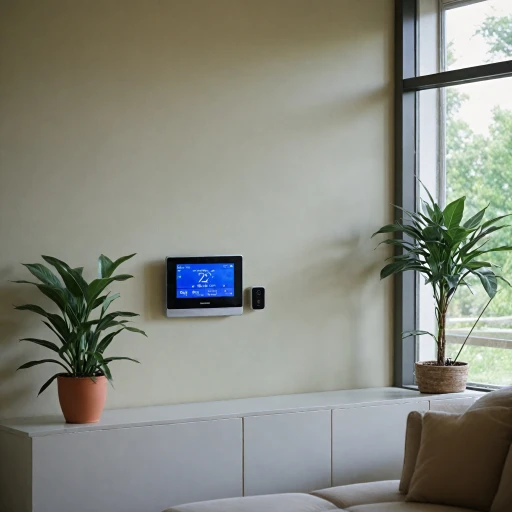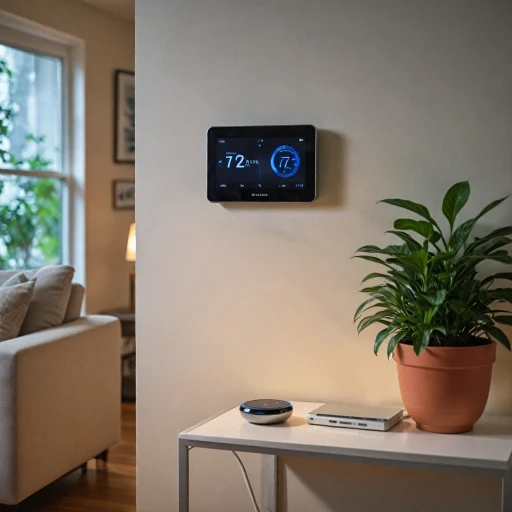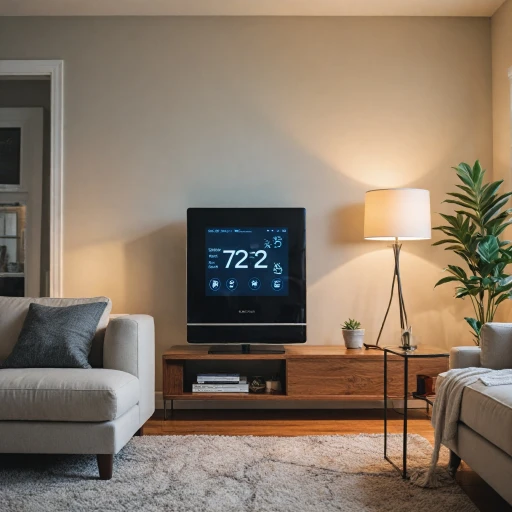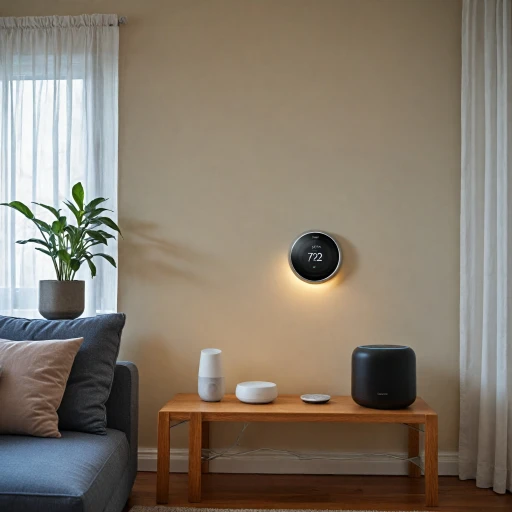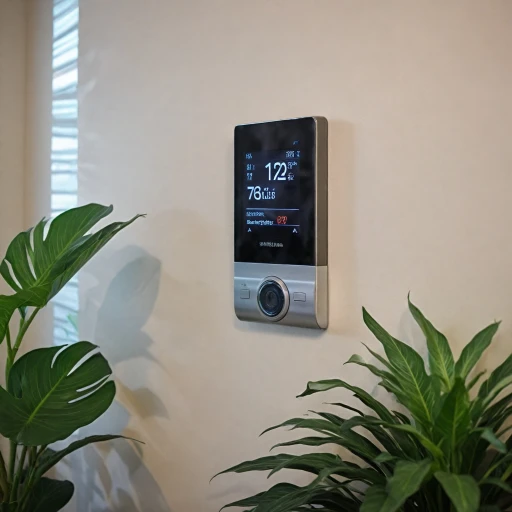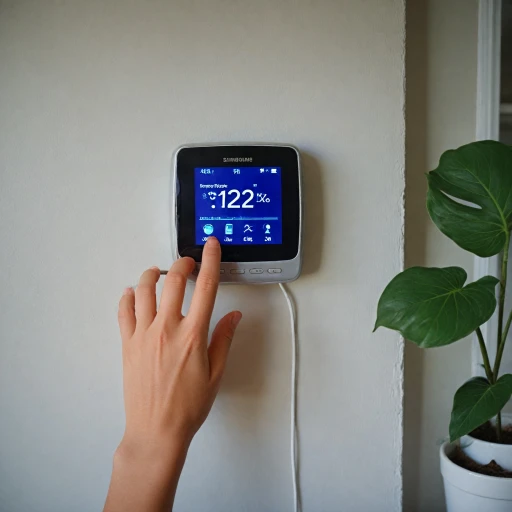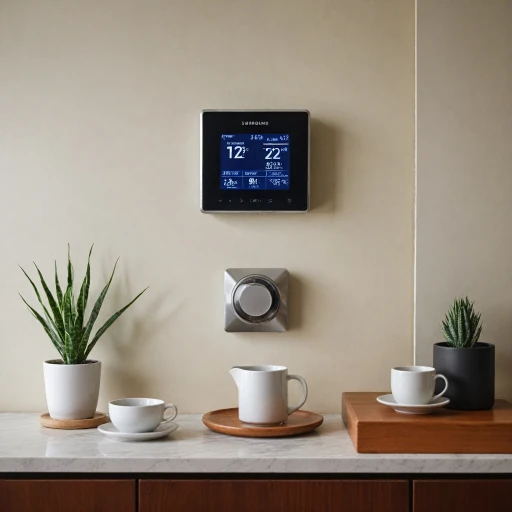
Understanding Eco Thermostats
Unlocking the World of Eco-Friendly Thermostats
The evolution of thermostats has come a long way from the manual dials of yesteryears to the advanced smart thermostats of today. Eco-friendly thermostats, often discussed alongside popular models like the Nest Thermostat, Ecobee Smart, and the Google Nest, are an integral part of this technological revolution. These devices not only allow you to set and control temperatures manually or through an app, but they also offer innovative features such as learning capabilities, integration with Amazon Alexa, Google Assistant, and even Apple HomeKit.
Eco-friendly thermostats stand out due to their smart and automated nature, designed to provide optimal heating and cooling efficiency. They are equipped with sensors that detect when you're home or away, adjusting the temperature accordingly to help save energy. By learning your daily heating and cooling patterns, these thermostats, like the Nest Learning Thermostat, can automatically set eco temperatures, improving comfort and reducing unnecessary energy consumption.
In addition to their adaptability, these thermostats integrate seamlessly into any smart home setup. With the growing trend of connected devices, smart thermostats are often compatible with platforms such as Amazon Alexa and Google, facilitating an easy and intuitive control of home temperatures through vocal commands or apps. Furthermore, they offer features like energy usage reports, helping you make informed decisions to boost efficiency and also save on your energy bills.
For homeowners transitioning from natural gas to propane-based heating systems, understanding eco-friendly thermostats is crucial. For more insights on making this transition seamlessly and ensuring compatibility with your smart thermostat, consider checking this comprehensive guide on transitioning from natural gas to propane.
Energy Efficiency and Cost Savings
Maximizing Energy Efficiency with Smart Thermostats
Smart thermostats, such as the Nest Learning Thermostat and the Ecobee Smart, have dramatically changed the way homeowners manage heating and cooling systems. One of their primary perks is their ability to save energy and reduce costs. These advanced devices are equipped with features like personalized temperature control and automatic scheduling, which help households optimize energy usage. This efficiency is achieved through data collected by built-in sensors and learning algorithms that adapt to your habits. As a result, you'll often find reduced HVAC costs on your energy bill. In addition, a smart thermostat can provide insights through an easy-to-use app, showing how energy consumption fluctuates. This transparency encourages more eco-conscious choices, leading to a noticeable reduction in both energy usage and expenses. Eco temperature settings are another advantage; these settings utilize minimal energy while maintaining comfort. Many thermostats, like Google's Nest Thermostat, offer an "Eco" mode that minimizes usage when you're away from home, ensuring you don't heat or cool an empty house. Moreover, some smart thermostats integrate seamlessly with voice assistants such as Amazon Alexa and Google Assistant. This integration offers hassle-free control via simple voice commands, further enhancing user convenience. Whether you need to adjust the temperature or set a schedule, these devices cater to your preferences effortlessly. While smart thermostats are a compelling investment, it’s crucial to consider your specific needs and household characteristics when choosing one. Factors such as compatibility with your heating system and support for extra features like humidity control could influence your decision. For those transitioning towards sustainable energy systems, understanding the benefits of propane over natural gas might be an advantage. This transition from natural gas to propane is a consideration worth making when aiming for maximum energy efficiency and savings.Environmental Impact
Positive Environmental Consequences
One of the striking benefits of adopting an eco-friendly thermostat is its substantial positive impact on the environment. By intelligently managing your home’s heating and cooling systems, these devices significantly reduce unnecessary energy consumption. This not only contributes to lowering household energy bills, but it also aids in decreasing your carbon footprint.
Smart thermostats, such as the Nest Thermostat or Ecobee Smart Thermostat, are becoming pivotal in households striving for eco-conscious living. Their capability to "learn" usage patterns and adjust temperature settings accordingly ensures energy resources are optimized, reducing wasteful heating and cooling. The use of advanced sensors to better balance home efficiency further aligns with sustainable living goals.
Moreover, smart thermostats integrate seamlessly with smart home ecosystems, linking with platforms like Amazon Alexa or Google Assistant, offering enhanced control and efficiency. With the increasing focus on renewable resources and sustainable technology, incorporating an eco temperature management system is a step towards a greener future. By utilizing a “learning thermostat” that offers insights and analytics, homeowners can make informed decisions concerning their energy usage – a meaningful contribution towards environmental conservation.
Features to Look for in an Eco Thermostat
Key Features To Enhance Efficiency And Convenience
When contemplating an upgrade to a smart thermostat for a more eco-friendly home, it’s important to consider the cutting-edge features that set them apart from standard thermostats.- Remote Control and Smart Home Integration: Utilizing devices like the Nest thermostat or Ecobee smart thermostats, users can conveniently control the temperature from any location. Compatibility with platforms such as Google Assistant, Amazon Alexa, and Apple HomeKit enhances user convenience, allowing effortless heating and cooling management with voice commands.
- Adaptive Learning Capabilities: Learning thermostats, like the Nest Learning Thermostat, intuitively learn your schedule and preferences to optimize the eco temperature settings. This smart adaptation helps save energy by adjusting to your daily routine without compromising comfort.
- Advanced Sensor Technology: Many smart thermostats, including the Google Nest, employ sensors to detect occupancy, humidity, and temperature fluctuations. This ensures that the thermostat eco mode is precisely adjusted to maintain optimal comfort and energy efficiency at all times.
- Energy Usage Insights: Eco-focused models like the Ecobee smart thermostat offer detailed reports and energy usage analytics. These insights empower users to understand energy consumption patterns and find actionable ways to save energy.
- Customizable Climate Zones: For ultimate precision, some thermostats allow for the creation of individual heating and cooling zones within a home. These zones can be independently managed to enhance comfort and energy savings by focusing on high-use areas.
- User-Friendly Mobile Apps: A seamless app experience is often accompanied by smart thermostats, such as those offered through Amazon Alexa or Google’s array of smart products. These apps provide comprehensive control, allowing users to easily manage settings, schedules, and even integrate with other smart home devices.
Challenges and Considerations
Potential Hurdles with Eco-Friendly Thermostats
Adopting eco-friendly thermostats, such as Nest, Ecobee, or similar smart devices, comes with various benefits, but there are challenges and considerations that homeowners should address. Smart thermostats rely on sophisticated technology, and although they promise cost savings and energy efficiency, these systems can present potential hiccups.- Compatibility Issues: Not every thermostat eco-compatible device will seamlessly integrate with your existing HVAC system. Older heating and cooling infrastructures might require upgrades to support smart technology.
- Initial Investment: While eco temperature control saves energy over time, the upfront cost can be high. Premium smart thermostats, like the Nest Thermostat or Ecobee Smart, come with features that can drive up the initial cost.
- Complexity of Use: For some, adapting to technology such as a thermostat app can be daunting. Although designed for ease of use, learning thermostats require a period of getting accustomed to their features like schedule settings or remote control via Amazon Alexa, Google Assistant, or Apple HomeKit.
- Privacy Concerns: Since smart thermostats collect data to optimize heating and cooling, privacy can be a concern. It's crucial to understand how data will be used and whether the smart thermostat adheres to CLS fill stroke standards on data protection.
- Network Dependency: These smart devices are reliant on a stable internet connection. Any disruption in network services can affect your ability to control the temperature remotely through apps or voice assistants like Alexa Google.
Future Trends in Smart Thermostat Technology
Innovations and Transformations in Smart Thermostat Technology
The future of smart thermostats promises to be even more innovative, bringing exciting features for managing home environments effectively. As technology rapidly advances, here are several trends reshaping the world of smart home climate control systems.- Enhanced Integration: The growing compatibility with voice assistants like Amazon Alexa, Google Assistant, and Apple HomeKit is making devices more user-friendly. These systems allow homeowners to control their thermostats through voice commands, providing a seamless integration with other smart home devices.
- Advanced Learning Algorithms: Newer models such as Nest Learning Thermostat utilize complex algorithms to adapt to user behavior. This extends the energy-saving features by allowing the thermostat to automatically adjust based on typical patterns, contributing to greater energy efficiency.
- Improved Sensor Technology: Future smart thermostats will likely feature improved sensors that can detect temperature variations with greater precision. This advancement in sensor technology will enhance comfort by allowing more accurate heating and cooling adjustments tailored to different rooms.
- Energy Consumption Insights: There is a shift towards smart thermostats offering real-time energy usage data. Insights and analytics regarding energy spend will be provided to help homeowners make more informed decisions about their heating and cooling practices, ultimately supporting their eco commitments.
- AI-Driven Energy Management: Artificial Intelligence is set to play a pivotal role in how these devices function, potentially overseeing and optimizing household temperature control independently. Through AI, thermostats will be able to make predictive adjustments to save energy without sacrificing comfort.



